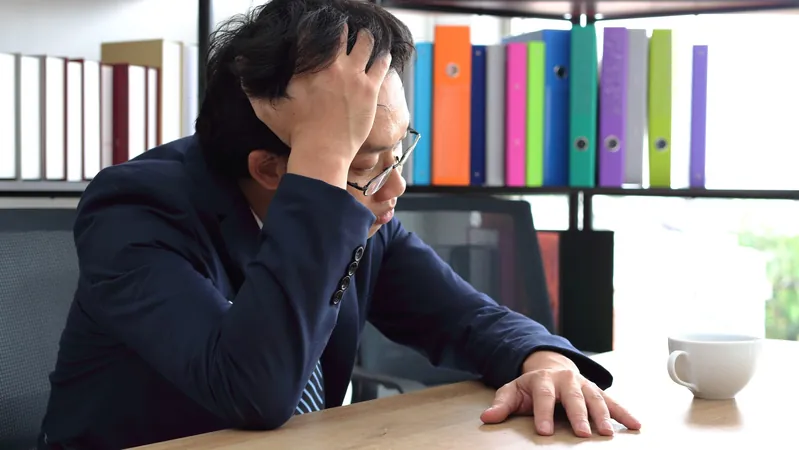
Shocking Study Reveals Harsh Realities for Women in Elite Sport and Exercise Medicine
2024-10-07
Author: John Tan
Introduction
In a groundbreaking study conducted by La Trobe University, it has been revealed that women working as physiotherapists and doctors in elite and professional sports face significant gender inequality, harassment, and lower pay than their male counterparts. This pioneering research is the first of its kind in Australia to comprehensively explore women's experiences in the highly competitive field of sport and exercise medicine (SEM).
Key Findings
Published in the prestigious British Journal of Sports Medicine, the study surveyed 223 professionals, with a significant majority (68%) being physiotherapists. An overwhelming 61% of respondents work in elite sports, representing an almost equal divide between men and women.
Dr. Sallie Cowan, the lead researcher and Senior Research Fellow at La Trobe's Sport and Exercise Medicine Research Centre, stated, "The findings unveil a hard truth: It's difficult to be a woman in the elite sport and exercise management workplace." The data indicates that women working in SEM endure not only lower pay and fewer opportunities but also face harassment more frequently than men.
Gender Imbalance
Men are reportedly more likely to be employed with male athletes, which reflects the existing gender imbalance in Australian SEM roles. The report points out that positions within men's teams are often perceived as more prestigious and better compensated, further deepening the inequality faced by women in the industry.
Underrepresentation of Women
The underrepresentation of women in sports leadership roles is another concern highlighted in the study, as it perpetuates gender inequity and allows for further incidences of harassment and discrimination. The barriers faced by women in SEM are multifaceted, encompassing cultural, structural, organizational, and personal challenges. These include persistent gender stereotypes, a lack of suitable childcare options, inflexible working hours, entrenched hierarchical systems, and insufficient training and mentorship resources.
Gendered Challenges
The study notes that while both genders encounter certain challenges, the obstacles disproportionately affect women, who often bear the brunt of childcare responsibilities and household duties, spending twice as much time as men on these tasks. Furthermore, female SEM physicians globally report experiencing more disrespectful treatment, having their professional judgment questioned, and facing higher rates of sexual harassment compared to their male peers.
Personal Accounts
Participants in the study shared poignant accounts of their experiences with discrimination in the workplace. One 37-year-old female professional recounted her disappointment in repeatedly losing performance roles to less qualified males, even when applying within women's high-performance teams. She shared instances where female athletes referred to their medical team as a "boys' club," calling for more female representation among their medical professionals.
Another participant, a 30-year-old woman engaged in elite sport, expressed frustration over the prevailing notion that women should only work with women’s teams while men dominate men's teams. She noted alarming pay disparities; in the AFL (Australian Football League), sports medicine teams reportedly earn approximately 50% less than their male counterparts.
Awareness and Responsibility
Some men within the industry are beginning to recognize the privilege they benefit from. A 52-year-old male professional acknowledged that a substantial part of his success stemmed from advantages that many other qualified individuals might not have, while a 44-year-old female colleague emphasized the added pressure women face to prove their competence.
Call to Action
Dr. Cowan urged for long-awaited recognition of the systemic gender inequity and harassment within the SEM industry, calling for organizations to implement affirmative action to eradicate gender biases. The report advocates for elite sports organizations to take decisive actions to promote equality and ensure the negative patterns observed do not carry over to future generations.
Conclusion
In a world that thrives on competition, it’s vital to dismantle these barriers and create an inclusive and supportive environment for all. The message is clear: the time for change is now!




 Brasil (PT)
Brasil (PT)
 Canada (EN)
Canada (EN)
 Chile (ES)
Chile (ES)
 España (ES)
España (ES)
 France (FR)
France (FR)
 Hong Kong (EN)
Hong Kong (EN)
 Italia (IT)
Italia (IT)
 日本 (JA)
日本 (JA)
 Magyarország (HU)
Magyarország (HU)
 Norge (NO)
Norge (NO)
 Polska (PL)
Polska (PL)
 Schweiz (DE)
Schweiz (DE)
 Singapore (EN)
Singapore (EN)
 Sverige (SV)
Sverige (SV)
 Suomi (FI)
Suomi (FI)
 Türkiye (TR)
Türkiye (TR)